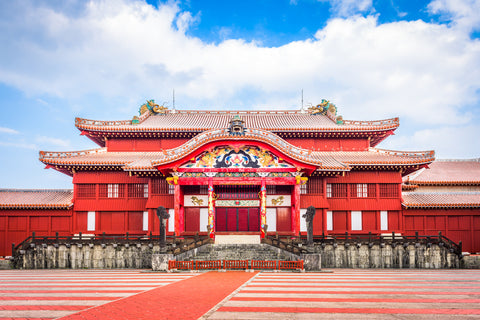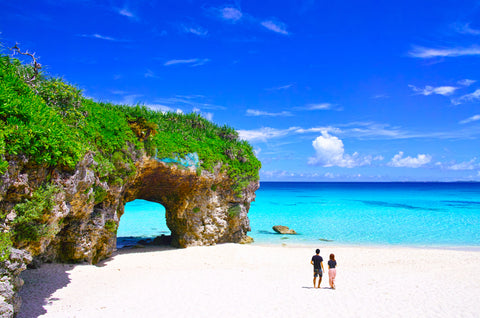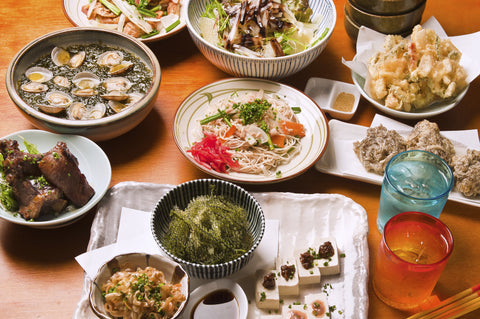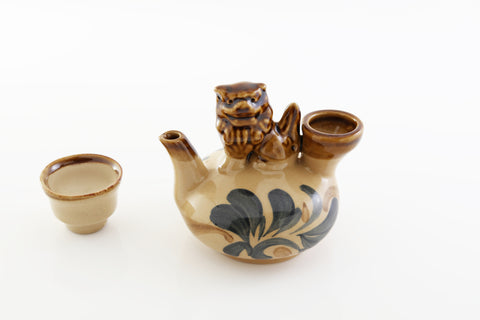Easter is just around the corner; the days are getting longer, and the weather is getting warmer. Many people enjoy a little break during the Easter holiday going somewhere warmer and sunnier. Did you know that there is a tropical island in Japan where many Japanese people visit to enjoy the warmer, tropical weather?
The island is called ‘Okinawa’
It maybe not your first destination to choose if you were to visit Japan for the first time. Why? It is located far down south and actually 3 hours flight away from Tokyo, so it’s like flying from London to Malta. It’s that far! It is the southernmost and westernmost prefecture of Japan. It has a geographic area of 2281 km square (880 sq mi), slightly bigger than Lewis and Harris island in Scotland. However, completely opposite to Lewis and Harris Island, Okinawa island is subtropical climate and normally has the temperature over 20C even in ‘winter’ time.

(An illustrated map of Japan - not to scale)
History
The island has not always been a part of Japan. The history of Okinawa is unique and fascinating. Let’s delve into its past:
Ancient Origins:
The history of Okinawa stretches back thousands of years to prehistoric times. The earliest Okinawans were the Minatogawa people, whose remains date as far back as 22,000 years ago. During this period, life on the islands revolved around hunting, gathering, and fishing.
Ryukyu Kingdom:
From 1429, Okinawa was ruled by the Ryukyu Kingdom, which lasted for 450 years. This small island kingdom developed its own distinctive culture, blending elements from Japan, China, Korea, and Southeast Asia. Through trade and diplomacy, it established an international position for itself.
Before becoming a prefecture during the early part of the Meiji period (1868–1912), Okinawa was a semi-independent kingdom influenced by both Japan and China.

(Shuri Castle of Ryuku Kingdom in Naha, Okinawa)
World War II:
In the final days of World War II, Okinawa became a fierce battleground where numerous lives were lost during the intense Battle of Okinawa in 1945. The prefecture suffered extensive damage, both its cultural heritage and human casualties. Following the war's end in 1945, Okinawa came under U.S. administration until it was reverted to Japanese control on 5th May 1972, the United States returned Okinawa Island to Japan, although for almost three decades, the islands experienced significant influence from American culture.
Present Day:
Today, Okinawa is a prefecture of Japan, located in the Pacific Ocean.
Key economic activities include tuna fishing, cattle raising, sugar refining, pineapple canning, and a growing emphasis on tourism. Okinawa is the holiday island for a lot of Japanese people.

(A beautiful beach on Miyako island, Okinawa)
Unique culture
Because Okinawa had been established as a country heavily influenced by Japan, China and Korea, it developed its own uniqueness.
The language: Although standard Japanese is widely spoken, the Okinawan have their own, very unique dialect. Well-known Okinawan dialect includes ‘Mensore’ (means Welcome), ‘Haisai/Haitai’ (means Hello), etc. I would not understand a word they say if they only Speak in their dialect!
Diet: They also have very different diet from typical Japanese cuisine such as sushi, tempura and yakitori. They consume a lot of pork, sweet potatoes, local vegetables, seafood, seaweed etc. They are simple, packed with nutrition and often less salt. Okinawa is known as Blue Zone where people’s life expectancy is higher than average. Their diet supposed to be one of the elements of their longevity.

(Typical Okinawan cuisine)
Karate: Karate was born and developed in the Ryuku Kingdom. You might have already known about this fact from ‘Karate kid’ or more recently from ‘Cobra Kai’. It has grown its popularity with 100 million practitioners worldwide.

(image of Karate)
Pottery: Yamuchin means ‘pottery’ in the Okinawan dialect. The characteristic feature of yamuchin are thick, sturdy construction and distinctive hand-created design. One of the designs is Ryuku Ruri Karakusa. At The Japanese Shop we have Ruri Karakusa range that boasts its rustic, simple yet powerful design, comes in different sizes of plates and bowls. Why don’t you own one of this beautiful earth ware for yourself and serve healthy Okinawan cuisine?

(Yamuchin Sake Pot and Sake Cup)

(Ruri Karakusa Pasta Bowl set)
Hope you liked the little history and its culture of the tropical island of Japan!
We are currently open for a pop up shop at the Bath House in RHS Harlow Carr, Harrogate until 5th of May. If you have a plan to visit the garden, please come and visit us too!
If you are not able to come see us to the pop-up shop, why don’t you browse our range on our online shop? Follow us on Instagram and Facebook for our latest news!

(Harlow Carr Pop-up Shop)
